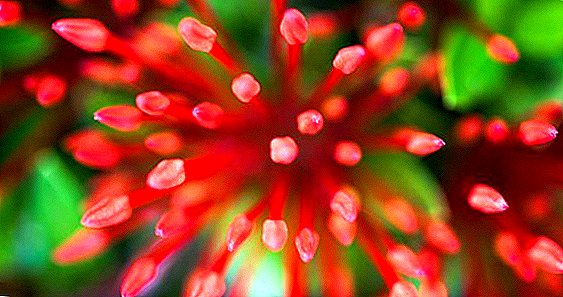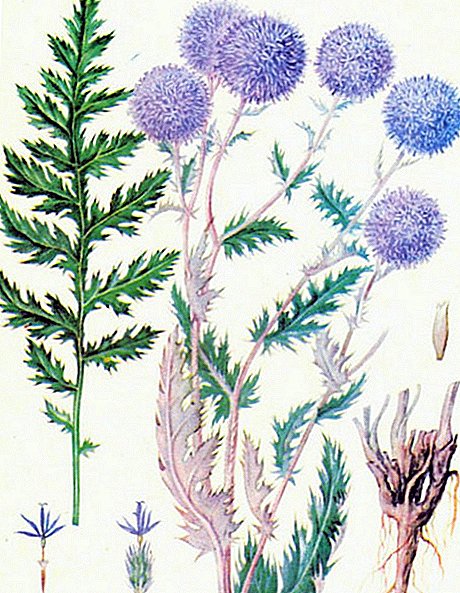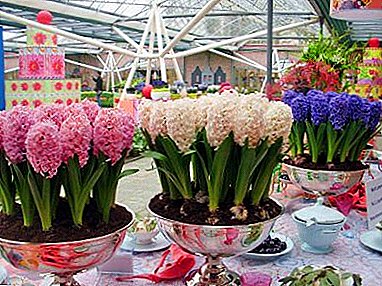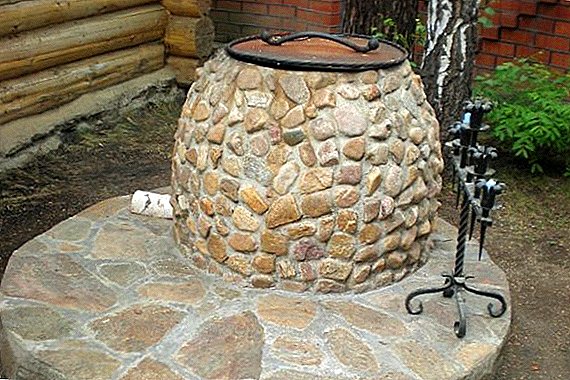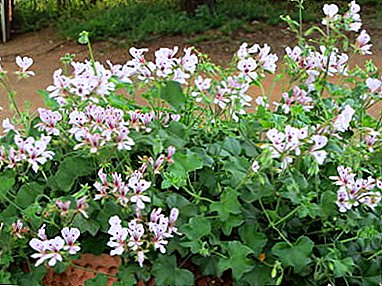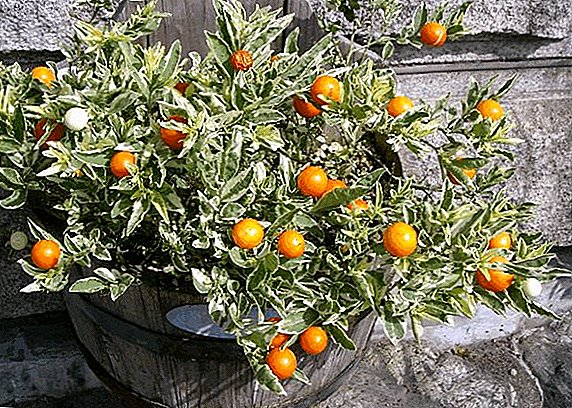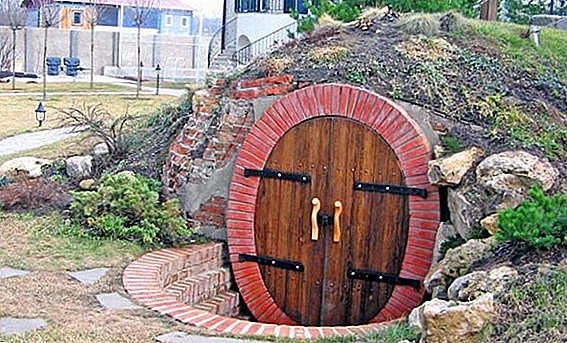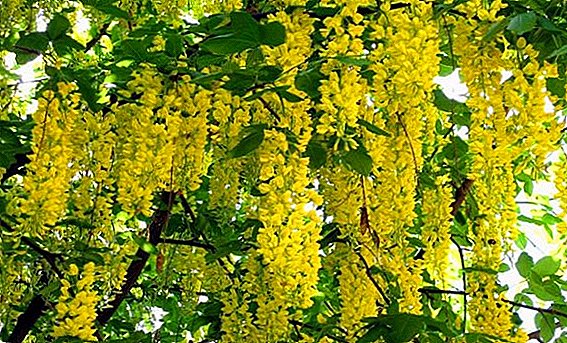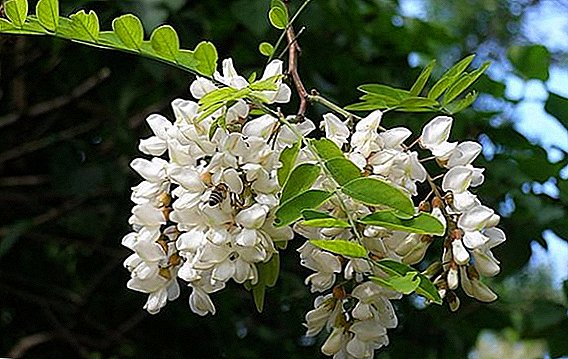 Acacia attracts the attention of summer residents and gardeners with its open-work multi-tiered crown, beautiful flowering and delicate aroma. Many people want to plant such a miracle on their site. By the way, it is quite simple - especially for already experienced summer residents. For those who are new to this business, we offer a complete list of agrotechnical rules for growing white acacia.
Acacia attracts the attention of summer residents and gardeners with its open-work multi-tiered crown, beautiful flowering and delicate aroma. Many people want to plant such a miracle on their site. By the way, it is quite simple - especially for already experienced summer residents. For those who are new to this business, we offer a complete list of agrotechnical rules for growing white acacia.
White Acacia: short description
 Acacia is a woody or shrub plant. Belongs to the legume family. Rhode acacia has about 750-800 species.
Acacia is a woody or shrub plant. Belongs to the legume family. Rhode acacia has about 750-800 species.
Etymologists explain the origin of the name of the tree from the Greek word ake, denoting "thorn, thorn" - in many species of acacia the stipules are modified into prickles.
A huge number of species of wood led to a little confusion. As a result, similar plants belonging to other genera and families began to be called acacias. So, for example, a silk acacia is called a tree from the genus Albizia, a yellow acacia is considered to be the shrub of the genus Caragan.
Did you know? The tree that we know as the acacia is white is actually called robinia. These acacias belong to the Mimosa family, they are very thermophilic and can grow only in the tropics and subtropics. In the wild, found in Australia, Mexico, Africa. Acacia and Robinia look very similar. North America is the birthplace of Robinia, or pseudo-campaigns, so it is not as thermophilic as the Acacia is real.White acacia is very beautiful in late May - early June, when it produces lush and fragrant inflorescences in the form of drooping brushes 10-25 cm long. The tree has an open, spreading crown. White acacia is beautiful and large leaves (up to 25 cm), pinnate of 7-19 small oval leaflets (2-4 cm in length). Stipules - in the form of thorns. The trunk grows to 25 m (sometimes 30 m) in height and up to 1.2 m in diameter. Fruits - beans, elongated, up to 6 cm long, flat, dark brown. Each contains from six to eight seeds. Ripen closer to the end of September.
 White acacia is divided into several subspecies: weeping, spherical, umbrella-shaped, small-leaved, pyramidal, golden. Each of them has a different degree of frost resistance and resistance to urban conditions. With age, the plants become stronger and more durable, with each passing year endure adverse factors and cold better.
White acacia is divided into several subspecies: weeping, spherical, umbrella-shaped, small-leaved, pyramidal, golden. Each of them has a different degree of frost resistance and resistance to urban conditions. With age, the plants become stronger and more durable, with each passing year endure adverse factors and cold better.
Acacia wood is valuable, used as fuel, in shipbuilding, for the manufacture of doors, parquet. Bark and flowers are used in the composition of drugs. The tree can live up to 50 years.
White acacia belongs to one of the most common ornamental species, so from the description of the plant we proceed to a detailed examination of the characteristics of its planting and cultivation at the dacha.
Choosing healthy acacia seedlings when buying
Particular attention should be paid to the selection of seedlings and the place for planting. From this will largely depend on the development and appearance of the tree in the future, as well as the selection of measures to care for him.
 Before buying carefully inspect the trunk of an acacia seedling - it should not be too thin with a well-developed root system. It is better to take plants with a closed rhizome, but at the same time make sure that it grows in a container and not planted shortly before the sale. It is necessary to take such seedlings, whose rhizomes look out of the drainage holes of the pot.
Before buying carefully inspect the trunk of an acacia seedling - it should not be too thin with a well-developed root system. It is better to take plants with a closed rhizome, but at the same time make sure that it grows in a container and not planted shortly before the sale. It is necessary to take such seedlings, whose rhizomes look out of the drainage holes of the pot.
Optimum landing times
Experts recommend planting acacia as a seed, and seedlings in the spring. Seedlings are placed in the open ground until the moment when they have buds.
A more undesirable period for planting is autumn. If the acacia is planted at this time, there is a risk that immature roots in damp and cold soil will be affected by rot. Seedlings from the container can also be planted in late summer - early autumn, when there will be no hot days.
Site selection and soil preparation
As an adult tree grows to a large size and has a wide-spreading crown, the place for its planting should be chosen initially spacious so that it has the opportunity to fully grow and develop. It is necessary to adhere to the distance between plants of 2.5 m.
 Acacia prefers to grow in the light, so it is important to take into account that the shade from other, taller trees does not fall on it.
Acacia prefers to grow in the light, so it is important to take into account that the shade from other, taller trees does not fall on it.
The tree grows well on any soil, even depleted. Neither wind nor drought is terrible for him. But it does not tolerate close occurrence of groundwater.
The ideal soil for acacia is a mixture of sand and compost with the addition of ash (old lime, dolomite powder, or crushed lime).
Did you know? Surprisingly, but the fact: the tree will develop better when planting in loose and poor soil than in clay and fertile.A bad place for robinia will be low areas, where it will freeze over due to the stagnation of cold masses in them.
It is not recommended to plant white acacia next to fruit trees, as it can inhibit their root system. Also, this culture should be located away from the places where children play. Firstly, since the tree is a honey plant, there will be many bees near the acacia during the flowering period. And secondly, the seeds and other parts of the plant are poisonous.
Pristvolny circle under the acacia must be kept clean - it is not worth planting additional plants in it.
Proper planting of white acacia seedlings
It is not necessary to place the seedlings in a too deep planting hole; this can cause the development of root disease. It is necessary to dig the size of the rhizome in breadth and slightly deeper than the length of the root.
 Saplings with an open root system are pruned so that the top is commensurate with the bottom. You can shorten and rhizome. When planting acacia on clay soil, the bottom of the pit should be drained - a 10-20 cm layer of gravel. If you want to fertilize the soil immediately, then do it with the help of "Nitroammofoski" (60-80 g per pit).
Saplings with an open root system are pruned so that the top is commensurate with the bottom. You can shorten and rhizome. When planting acacia on clay soil, the bottom of the pit should be drained - a 10-20 cm layer of gravel. If you want to fertilize the soil immediately, then do it with the help of "Nitroammofoski" (60-80 g per pit).
A stake is driven into the bottom of the pit, the seedling is placed in the hole, its roots are carefully straightened and covered with earth. The root neck at the same time should be located on the same level with the edges of the pit. Then the seedling is well watered. It is recommended to soil the soil in the near-stem circle with a layer of 5-7 cm. It is better to use peat as mulch.
White acacia refers to fast-growing trees., and if proper planting and proper care were carried out, then, under favorable growing conditions, it is capable of giving an annual increase of 60-80 cm (in the first years to 1.2 m) in height and 20-30 cm in width. Flowering occurs at the age of three, four.
Care for acacia white
If the choice of location and planting were carried out in accordance with all the recommendations, the care of the white acacia is easy - it will be minimal: periodic watering, fertilizing, if necessary, pruning.
 Fertilize the plant can only three years after planting. For this, any complex fertilizer, such as Kemira Universal, is suitable. On one tree will need 100-120 g. Fertilizers during the flowering period and in July, scatter on the soil and lightly with it and sprinkle.
Fertilize the plant can only three years after planting. For this, any complex fertilizer, such as Kemira Universal, is suitable. On one tree will need 100-120 g. Fertilizers during the flowering period and in July, scatter on the soil and lightly with it and sprinkle.
In August, it is advisable to feed the acacia with potassium using potassium sulfate (30 g) or ash (1 cup).
Since white acacia does not like waterlogging, watering will be needed only for young plants. Mature trees are watered only during long dry periods. The rest of the time they will have enough moisture coming along with precipitation.
The soil under the tree will need to periodically weed in order to destroy weeds.
Important! Acacia does not like to be disturbed by its root system. For this reason, it’s not worth digging up the ground in the near-circle wheel, just loosen it slightly. Also, it should not be planted other plants, especially bulbous. The tree is ready to divide the tree trunk only with plants that have a small root system.Pruning of white acacia is shown only if necessary - in the summer should be removed broken, frozen out branches. But to make a form of crown is unlikely. Usually, after such pruning, the acacia produces long shoots. Although you can experiment, but do it in the spring.
Disease and Pest Resistance
 White acacia is characterized by high resistance to diseases and pests. Occasionally, it can be attacked by sucking parasites: scammer and sawfly. As a result of their harmful activity, the plant stops growing, lags behind in development, and curvature of the shoots takes place.
White acacia is characterized by high resistance to diseases and pests. Occasionally, it can be attacked by sucking parasites: scammer and sawfly. As a result of their harmful activity, the plant stops growing, lags behind in development, and curvature of the shoots takes place.
In order to scare away these insects, spraying with decoction of insecticide plants is used: black henbane, hellebore, hemlock spotted. In case of mass lesions, it is necessary to resort to the treatment with chemical insecticides: "Aktara", "Karbofos", "Rovikurt", etc.
Important! Apply chemicals for spraying acacia need only as a last resort. Do not forget that acacia is a honey plant, and strong chemistry is deadly to bees.
Shelter for the winter of young acacia trees
The roots of a young white acacia for up to three years will need to be covered before the winter with a 10-centimeter layer of dried leaves and peat. The tree itself can be wrapped with hessian or nonwoven fabric.
In order for the plant to be able to harden a little, it is covered after the leaves fall, when quite cold weather has established.
White locust - excellent melliferous
 Robinia has a number of useful properties. The main advantage is that it produces delicious and valuable honey from its nectar. Acacia medoproizvoditelnost, according to various sources, is up to 1000 kg per 1 ha, which equates to very high rates.
Robinia has a number of useful properties. The main advantage is that it produces delicious and valuable honey from its nectar. Acacia medoproizvoditelnost, according to various sources, is up to 1000 kg per 1 ha, which equates to very high rates.
Acacia honey is valuable in that it is May and dietary. His sweetness is not cloying, it is transparent in color, does not crystallize for a long time and does not turn sour.
We tried to give you all the detailed information about the acacia and its agricultural techniques. As you can see, it is easy to grow this tree, the main thing is to have the desire and make a little effort. The tree looks wonderful when planted alone, as well as when planted in groups, in alleys and hedges.



